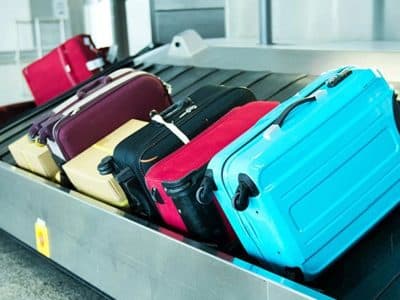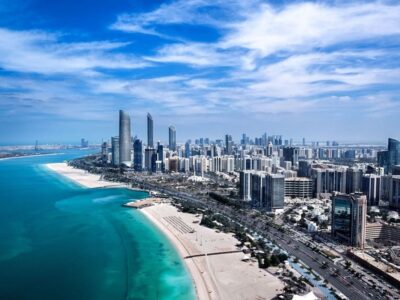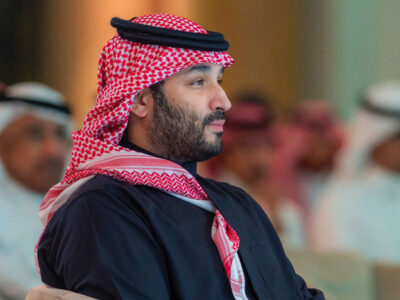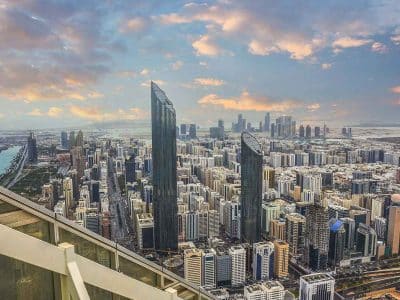Is the UAE doing enough to promote its leisure facilities? Leading operators reveal their marketing strategies and plans for future campaigns.
There have been countless announcements this year of forthcoming leisure developments for the UAE. From new additions to Dubailand, such as Freej, The Little Big Club and Legoland Dubailand, through to international museums and local culture at Khor Dubai, and the country launch of global health-club chain Virgin Active, no sector has been untouched.
In addition to signing leases, beginning construction, dealing with suppliers, recruiting staff and defining their product, project managers have one major task on their hand: developing and communicating a successful marketing strategy.
The key aim of the marketing strategy will be to ensure that the development sustains itself in the long-term.
For those developments that are extensions of existing brands, such as Legoland Dubailand and Virgin Active Dubai, this may be easier assuming brand recognition among at least some of the populations represented in the UAE’s population. However, there are a lot of big brands coming – including Universal Studios, Warner Bros, Ferrari, Formula One and Six Flags – and each will need to define itself in the unique and diverse Middle Eastern market.
The UAE’s home-grown leisure attractions, such as Yas Island’s waterpark in Abu Dhabi, WOW RAK in Ras Al Khaimah and The Museum of Middle Eastern and Modern Art in Dubai, will have to work harder and invest more time and money in creating a brand at the outset. On the flip side, they will avoid the issue of marketing to an existing perceived notion, well informed or not, of their facility.
Either way, with so many leisure attractions coming up and so much to choose from, no-one can afford to be complacent. After all, while there is huge interest in the major projects now, this does not guarantee visitors down the line. And in a country that will rely on repeat visitation to hit visitor targets of 15 million tourists by 2015, this is of major importance.
To find out more about creating and delivering a marketing strategy in this challenging market, Leisure Manager caught up with experts at three of the region’s biggest attractions already in operation.
DubaiSports City
Dubai Sports City (DSC) was officially launched in the first quarter of 2004 with the vision of filling the gap as a destination for the sporting world by providing a venue to watch major events, a place to learn and improve on sporting skills, and a place to participate in sport at all levels.
“It has positioned itself as the venue of choice for major sporting events, a city within a city integrated and themed on sport, unlike anything anywhere in the world,” says Arun Mani, senior marketing manager, advertising and branding at DSC.
It therefore requires a phased marketing strategy taking into account the need to build the brand locally as well as internationally – through aligning with world-renowned partners such as Manchester United Soccer Schools and the International Cricket Council – and the need to market the individual elements within DSC, explains Mani.
“The key aim of the marketing strategy will be to ensure that the development sustains itself in the long-term,” states Mani, emphasising that this is not just in terms of commercial sustainability but in “generating true mass interest”.
Marketing will also be important in attracting sponsors for the various events that DSC expects to manage the rights for.
“Event rights are a major source of revenue within the sports industry, incorporating sponsorship, ticketing, hospitality and broadcasting elements, but we will be looking to supplement these through the exploitation of stadium rights, such as naming rights, premium seat and corporate box rights,” says Mani.
So far, DSC’s communication strategy has been multi-layered, he continues.
It has ranged from “mass advertising and PR to more direct routes such as participation and association with key events and exhibitions, speaking opportunities across the world, and aligning ourselves with world-renowned brands,” says Mani.
“Effectiveness of a particular medium really varies from market to market. Locally, mainline dailies continue to be our best opportunity while internationally, PR has been found to be most strategic as well as cost effective,” he reveals.
The target audience varies too, he adds, explaining that it has evolved over time although the majority of marketing budgets are skewed towards the local market.
“The marketing and PR campaign began by targeting a global audience, making people aware of the concept of DSC and what we have to offer,” says Mani.
“As the brand evolves and individual elements begin to come online, each area of DSC will target its respective audience. For instance The Els Club, the golf course at Dubai Sports City, is an exclusive facility and most of the marketing has been direct to a very niche audience. As stadiums, sports academies and retail offerings begin to come online, the marketing focus would broaden its scope to a much larger audience,” Mani reveals.
“Today’s consumer is highly informed, knows what they want and in a place like the UAE has a multitude of options to choose from. I think the greatest challenge doesn’t lie in the marketing but in providing product differentiation and prompt delivery of it. Living up to consumer expectations, providing the highest levels of service and delivery is what really makes you stand out,” concludes Mani.
DubaiAutodrome
At Dubai Autodrome, part of MotorCity in Dubailand, the marketing strategy is very much about developing both the brand and interest in the motorsport experience, according to sales and marketing executive manager Peter Burns.
1. Stand back and read your flier or advert from a distance. Hold your ad at about 10ft away and then see if you can read it. In today’s society with so much marketing, you’ve a split second as to whether people see your message, so don’t let them work too hard. If you can’t get the message from a distance start again.
2. People read in a ‘Z’ shape irrespective of how you lay out a flier. So your big points should be in the top left, right, bottom left then bottom right. It usually helps if the ‘next step to take’ is here because that’s the last thing that they look for.
3. To get the right aesthetic design, hold the flier upside down and it should look the same. This checks that the flier has balance in symmetry and feel.
4. Photos speak a million words. People get drawn into pictures of other people – you just need to look at the front page of any magazine on the market and you will see that publishers take great care on what they put on the front page. For club owners, as a rule of thumb, when designing an advert dedicate at least a third of it to a photograph – particularly one of people.
5. Finally, to make sure that you’ve put in all the information that is required for your fliers or adverts, make sure that it answers the following questions for your desired message: `what’, `why’, `where’, `when’, and `how’. What is the offer that you are trying to advertise? Why are you offering it? Where is the club is located? When do people need to respond? How do they take action? If you answer all these questions, then you certainly know that you won’t have any nightmares – it’s all too easy to leave on an important phone number or name off the flier if you don’t check it properly.
CFM employs more than 200 people across eight countries and by working with 200 independent gyms worldwide, generates 40,000 new members on long-term membership agreements every year.
Previously involved in the pioneering days of marketing Formula One from 1985 through to 2002, Burns is well placed to deliver on this. He explains that his priority is to raise the profile and awareness of Dubai Autodrome and communicate its various facilities and events to both the general public – both UAE residents and tourists – and the corporate market.
“Marketing campaigns in the past have focussed on the individual activities at the Autodrome, from international events, to race and driving experiences and karting, mainly through advertising,” says Burns.
“We have now moved towards each of the events and experiences complementing and integrating with each other through our See it …Experience it campaign which is linked to driving people to our website, where full details of the activities are available. For example, for the last Grand Racing event we offered free grandstand seats to those who registered through the website, which generated a large number of interested parties, plus significantly increased our database,” continues Burns.
The corporate market has significant potential in terms of providing corporate entertainment and incentives.
“The corporate market has significant potential in terms of providing corporate entertainment and incentives. This is an area which we believe is in its early stages within the UAE and the Middle East,” he adds, explaining that the Autodrome has plenty to offer from VIP experiences to catering for 10 to 10,000 people.
The venue opened in 2004 and since then the main marketing challenge has been promoting a sport that has only recently emerged in the UAE, and then establishing Dubai Autodrome as the real heart of that sport, reveals Burns.
“In Europe, motorsport has been established for many years; here in the UAE it’s in its evolutionary stage and the Autodrome is playing a key role in helping to develop the sport with track days, auto tests, national and international race meetings and the HSBC Academy to help develop national UAE talent,” says Burns.
Added to this is the challenge of marketing a facility whose surrounding environment, that of the 3.5 million m2 MotorCity, is far from completion.
“One of our biggest challenges is growing the business balanced against the developing surroundings,” says Burns.
Despite the challenges posed by a market in relative infancy, last year Dubai Autodrome’s main events attracted numbers in the region of 18,000 spectators.
Burns adds: “We hope to grow on that this season (2008-2009) with some large and exciting events.”
“In addition to this, the highly-successful Kartdrome with Arrive and Drive has led to the building of the new indoor Kartdrome.”
“The development also includes a new laser-quest attraction, which is proving to be a big hit,” he reveals.
The Global Village
Global Village is one of Dubai’s longest-standing attractions, which has had to continually evolve and update its marketing strategy as the project has grown. Initially it was marketed alongside Dubai Shopping Festival (DSF) but in the future it needs to develop an alliance with the Dubailand brand, reflecting the importance of marketing in association with others.
Global Village project director Abdul Redha Ali Bin Redha explains: “Global Village has been in existence since 1996, when it started along the Dubai Creek with a selection of kiosks providing products and handicrafts from different countries.”
“From its inception, Global Village was marketed hand in hand with the DSF as its central attraction. Over the years, the relationship between the DSF and Global Village has remained strong, and there are still many joint marketing activities done between the two organisations by use of PR, large-scale events, and TV broadcasts.
Since 2005, Global Village as an entity has additionally developed a separate marketing, PR and advertising plan to support a longer duration which extended beyond the DSF period”.
With regard to this year’s marketing campaign for the temporary Global Village, which will run from November 12 2008 to February 21 2009, Bin Redha continues: “For Global Village, the marketing campaign is all about the content, which is the unique combination of shopping, dining, and entertainment within the park. And this year we have additions to the temporary event in terms of all three, and most notably within the entertainment offering of several new key attractions, and an exciting park-wide shows programme.”
“Our campaign strategy will be to bring forth these elements out to the public to build awareness and excitement via PR, advertising, and large-scale, participatory events. We also hope that by highlighting the entertainment, we will make the connection in consumers’ minds between Global Village and Dubailand, of which we’re a member,” says Bin Redha.
He says that the marketing approaches for Global Village that have had the most impact are those that draw the audience in – events such as significantly-large raffles, world-breaking record attempts and firework spectaculars.
“From a creative campaign perspective, those which showed the diverse, multicultural nature of our offering – and in particular our retail offering – have been the best received and most effective to date,” continued Bin Redha.
Marketing is primarily targeted at the residents in the UAE, specifically Dubai, and secondarily at inbound Middle East and North Africa tourist groups. Of the diverse UAE resident base, Bin Redha says that they “often consume media in very different ways based on which demographic group they belong to”.
“Our target is fairly broad-based, and because our park has a universal appeal, we try to focus our efforts on PR and advertising in publications that will give us the broadest reach,” says Bin Redha.
The approach is clearly working; last season Global Village attracted 4.5 million visitors over its three month duration.
“We are hoping to attract slightly higher numbers this year,” says Redha.
The top three things for leisure operators to consider are: determining your market, defining your experience; and connecting the experience to your audience, according to Global Village project director Abdul Redha Ali Bin Redha.
“First and foremost, you need to determine who your target is. The next step then is to consider what it is it about your leisure destination that will connect with your target audience: what is the experience? How will it feel to them, and how will it make them feel? And then finally, you need to figure out how to best connect the experience to the target audience,” says Bin Redha.
“This will help you decide what sort of media, advertising, or promotional channel you would use to reach them, what the messaging should be, how the creative will look, etc. It all comes down to the intersection between your guest and your venue, and bringing that experience out to each prospective consumer. Once these decisions are made, the strategy can then be rolled out into a fully-fledged campaign, with the appropriate above and below the line activations to properly connect with prospective target guests,” explains Bin Redha.
Arun Mani from Dubai Sports City adds that when devising a marketing strategy leisure operators must consider: how to ensure the consumer experience is unique and memorable; the availability of high standard supporting infrastructure; and finally, the costs.







